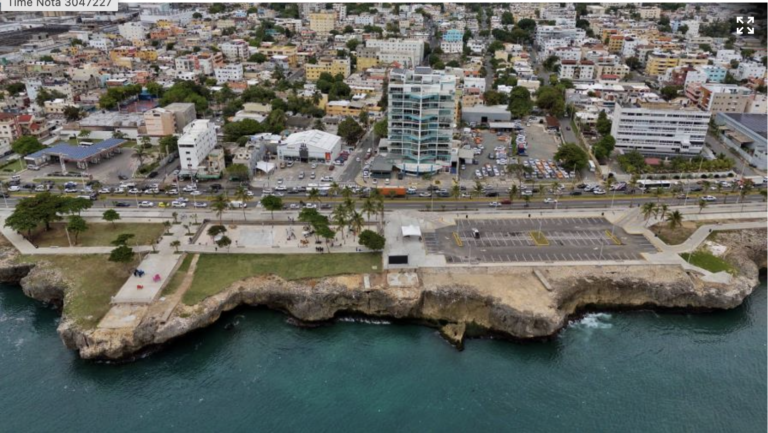El descenso del indicador en la región latinoamericana, causado como en otras latitudes por la incertidumbre generada por la pandemia de covid-19, fue algo mayor a la media de las economías en desarrollo (-16%), según el informe presentado por la Conferencia de las Naciones Unidas para el Comercio y el Desarrollo (Unctad).
Perú y Brasil, las más golpeadas. México y Chile capean la crisis
Brasil, uno de los países más afectados por la crisis sanitaria, sufrió un desplome de la inversión exterior del 48% entre enero y junio, hasta sumar US$18,000 millones.
Aún más intensa fue la caída del flujo inversor en Perú (del -72%, para sumar US$1,300 millones), país donde la suspensión de proyectos mineros influyó en esta bajada, mientras que en Argentina el descenso fue del 40% y en Colombia del 34%.
En medio de estos fuertes descensos, llamó aún la atención el caso de Chile, donde las inversiones en industria y comercio, sumadas a la venta de parte del accionariado de la compañía aérea Latam a la estadounidense Delta Airlines, contribuyeron a que el flujo inversor creciera un 67% hasta los US$9,500 millones.
México fue otra de las economías donde la inversión subió, un 5% interanual, hasta totalizar US$18,000 millones, más de la mitad de ellos en forma de ganancias por reinversiones.
Pese a las excepciones positivas, los confinamientos en muchos países de la región, como en otras zonas del planeta, frenaron muchos proyectos de inversión, y las perspectivas de una profunda crisis económica poscovid detuvieron nuevas inyecciones de capital, según analizó el informe.
Inversión mundial reducida a la mitad
En cifras absolutas, la inversión extranjera directa de enero a junio ascendió globalmente a US$399,000 millones, casi la mitad de los US$777,000 millones del mismo periodo de 2019.
Las economías más afectadas por esta tendencia fueron las de los países desarrollados, donde la inversión se hundió un 75% interanual hasta totalizar únicamente US$98,000 millones.
En este grupo, la inversión en Norteamérica bajó un 56% interanual, hasta ser de US$68,000 millones en la primera mitad de este año.
Europa cerró ese periodo con una cifra negativa de inversiones de -US$7,000 millones, frente a los US$203,000 millones recibidos en el mismo periodo de 2019.
Asia ofreció las cifras menos negativas a nivel global, con un descenso interanual del 12%, “debido principalmente a la resistencia de los flujos hacia China”, analizó el informe de Naciones Unidas.
En cifras absolutas, el continente asiático atrajo US$217,000 millones de capital exterior, más de la mitad del total, lo que la mantuvo como la región líder en inversión extranjera, un puesto que ya tuvo en 2019.
Más miedo a entrar en nuevos mercados
Las primeras inversiones de empresas foráneas en un país, importante indicativo de las tendencias de la inversión extranjera global, ascendieron a US$358,000 millones en los primeros ocho meses de 2020, un descenso del 37%.
La bajada fue más acentuada en este caso en las economías en desarrollo (-49%) que en las desarrolladas (-17%).
Unctad también reportó que las fusiones y adquisiciones en los primeros nueve meses de 2020 ascendieron a US$319,000 millones, con un descenso del 21% en los países desarrollados, que representan un 80% de las adquisiciones de este tipo de transacciones globales.
El informe subrayó que no obstante se ha mantenido el nivel de fusiones y adquisiciones en el sector digital, uno de los menos afectados por la pandemia.
A la vista de las cifras, Unctad mantiene una previsión de caída de la inversión extranjera global de entre el 30% y el 40% para todo el año 2020, con un menor descenso a partir del tercer trimestre en los países desarrollados, una estabilización de los flujos en los economías en desarrollo y cierta recuperación en Asia.
Las perspectivas están con todo rodeadas de incertidumbre, ya que “todo depende de la duración de la crisis sanitaria y de la efectividad de las intervenciones gubernamentales para mitigar los efectos económicos de la pandemia, a lo que se añaden riesgos geopolíticos”, concluye el organismo de Naciones Unidas.
Fuente: Periódico El Dinero[:en]Foreign direct investment in Latin America fell by 25% year-on-year in the first six months of 2020, falling from US$83,000 million in that period of 2019 to US$62,000 million, although the collapse was less than the world average, 49%, according to showed a United Nations report on Tuesday.
The decline in the indicator in the Latin American region, caused as in other latitudes by the uncertainty generated by the covid-19 pandemic, was somewhat higher than the average for developing economies (-16%), according to the report presented by the Conference of the United Nations for Trade and Development (Unctad).
Peru and Brazil, the hardest hit. Mexico and Chile weather the crisis
Brazil, one of the countries most affected by the health crisis, suffered a 48% drop in foreign investment between January and June, reaching US$18 billion.
Even more intense was the drop in investment flow in Peru (-72%, to add US$1.3 billion), a country where the suspension of mining projects influenced this drop, while in Argentina the drop was 40% and in Colombia, it was 3. 4%.
In the midst of these sharp declines, the case of Chile still attracted attention, where investments in industry and commerce, added to the sale of part of the shareholding of the airline Latam to the American Delta Airlines, contributed to the investment flow to grow 67% to US$9.5 billion.
Mexico was another of the economies where investment rose, 5% year-on-year, to total US$18,000 million, more than half of it in the form of earnings from reinvestments.
Despite the positive exceptions, the lockdowns in many countries in the region, as in other areas of the planet, held back many investment projects, and the prospects of a deep post-COVID economic crisis stopped new capital injections, according to the report.
Global investment cut in half
In absolute figures, foreign direct investment from January to June amounted globally to US$399,000 million, almost half of the US$777,000 million in the same period of 2019.
The economies most affected by this trend were those of developed countries, where investment plunged 75% year-on-year to a total of only US$98 billion.
In this group, investment in North America fell 56% year-on-year to $68 billion in the first half of this year.
Europe closed that period with a negative investment figure of -US $7,000 million, compared to the US $203,000 million received in the same period of 2019.
Asia offered the least negative figures globally, with a year-on-year decrease of 12%, «mainly due to the resistance of flows to China,» the United Nations report analyzed.
In absolute figures, the Asian continent attracted US$217,000 million of foreign capital, more than half of the total, which kept it as the leading region in foreign investment, a position it already held in 2019.
More fear of entering new markets
The first investments of foreign companies in a country, an important indicator of global foreign investment trends, amounted to US$358,000 million in the first eight months of 2020, a decrease of 37%.
The decline was more pronounced in this case in developing economies (-49%) than in developed ones (-17%).
Unctad also reported that mergers and acquisitions in the first nine months of 2020 amounted to US$319,000 million, with a decrease of 21% in developed countries, which represent 80% of acquisitions of this type of global transactions.
The report stressed that, however, the level of mergers and acquisitions in the digital sector, one of the least affected by the pandemic, has been maintained.
In view of the figures, Unctad maintains a forecast of a fall in global foreign investment of between 30% and 40% for the entire year 2020, with a smaller decrease from the third quarter in developed countries, a stabilization of flows in developing economies, and some recovery in Asia.
The outlook is still surrounded by uncertainty, since «everything depends on the duration of the health crisis and the effectiveness of government interventions to mitigate the economic effects of the pandemic, to which geopolitical risks are added,» concludes the agency of the United Nations.
Source: El Dinero newspaper[:]





